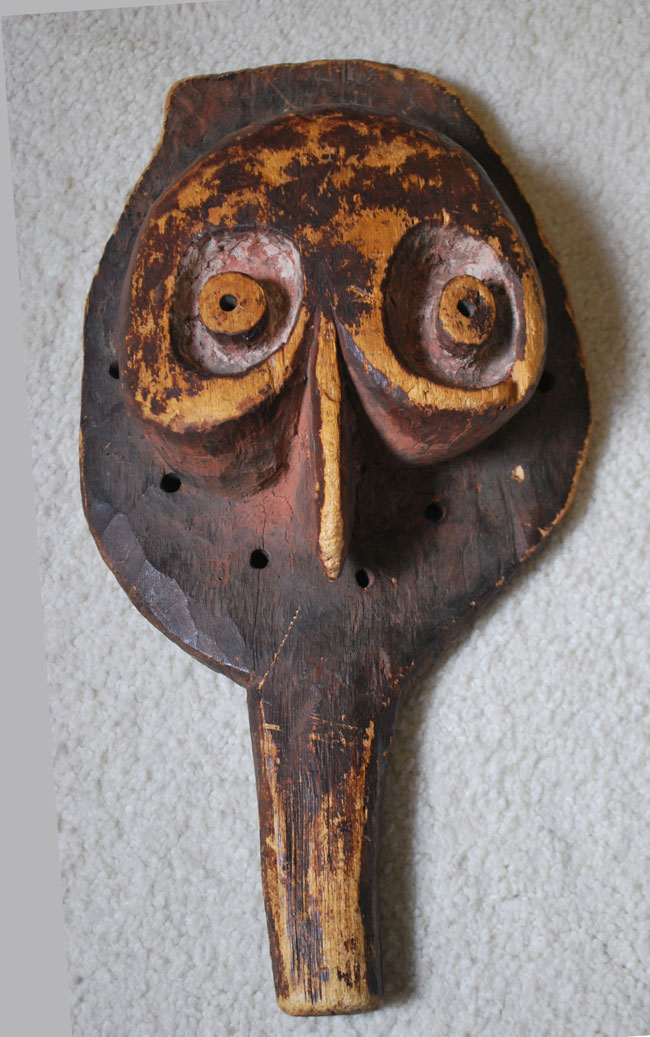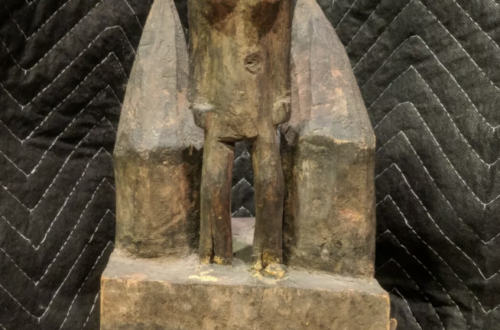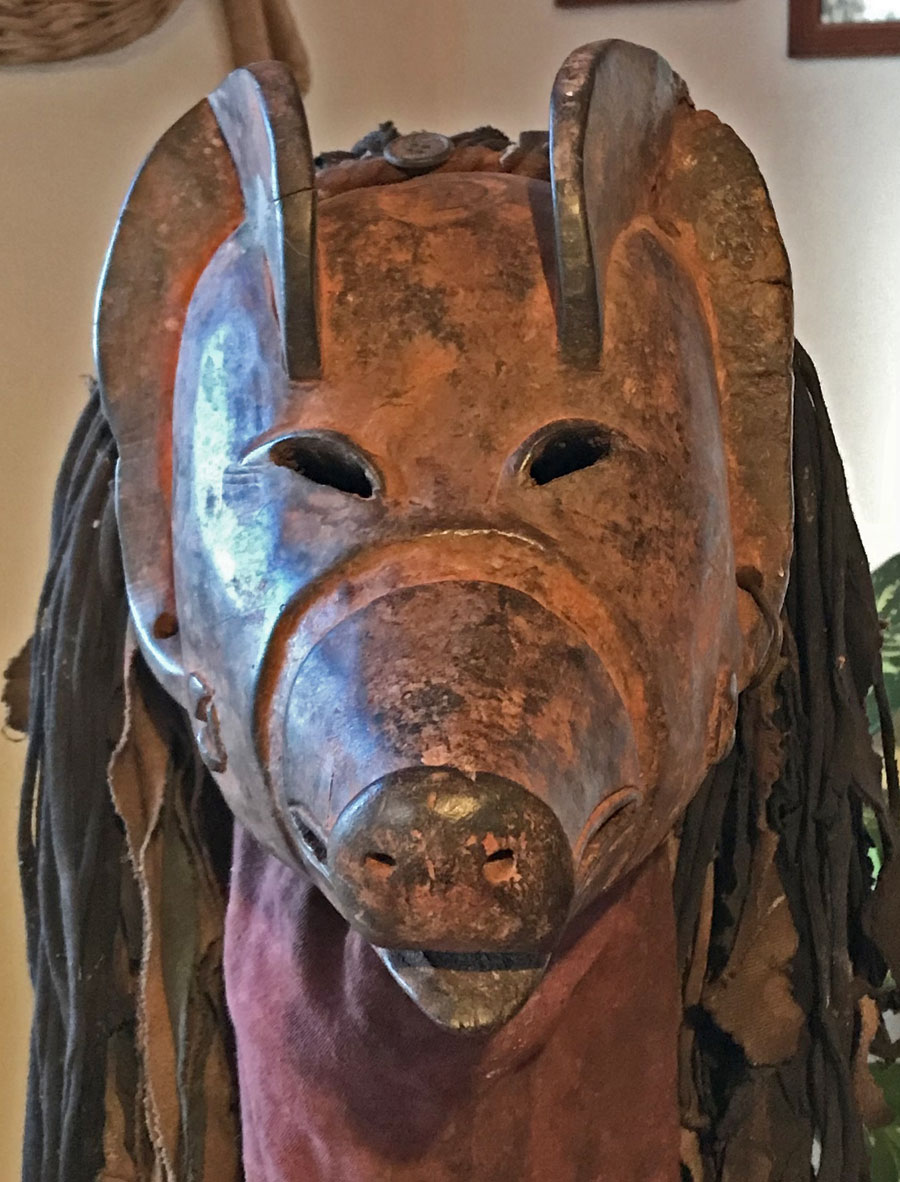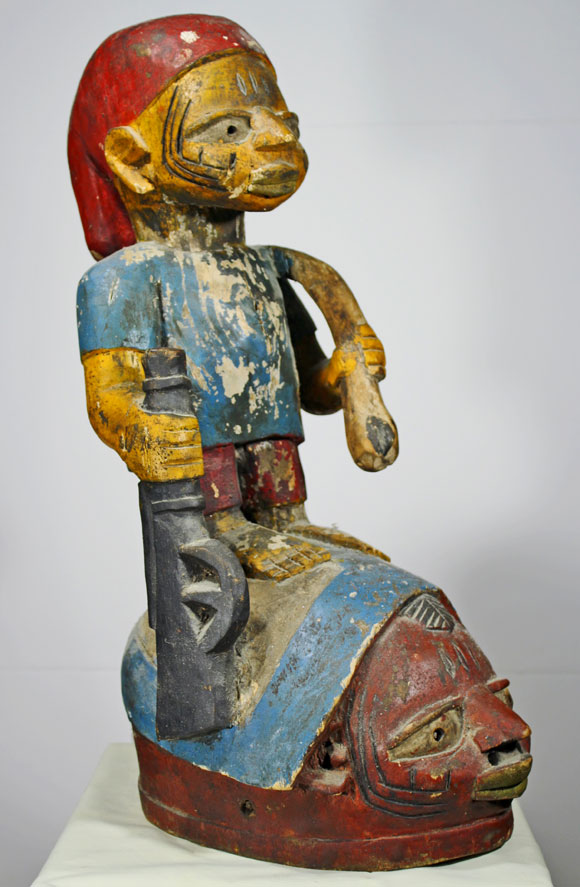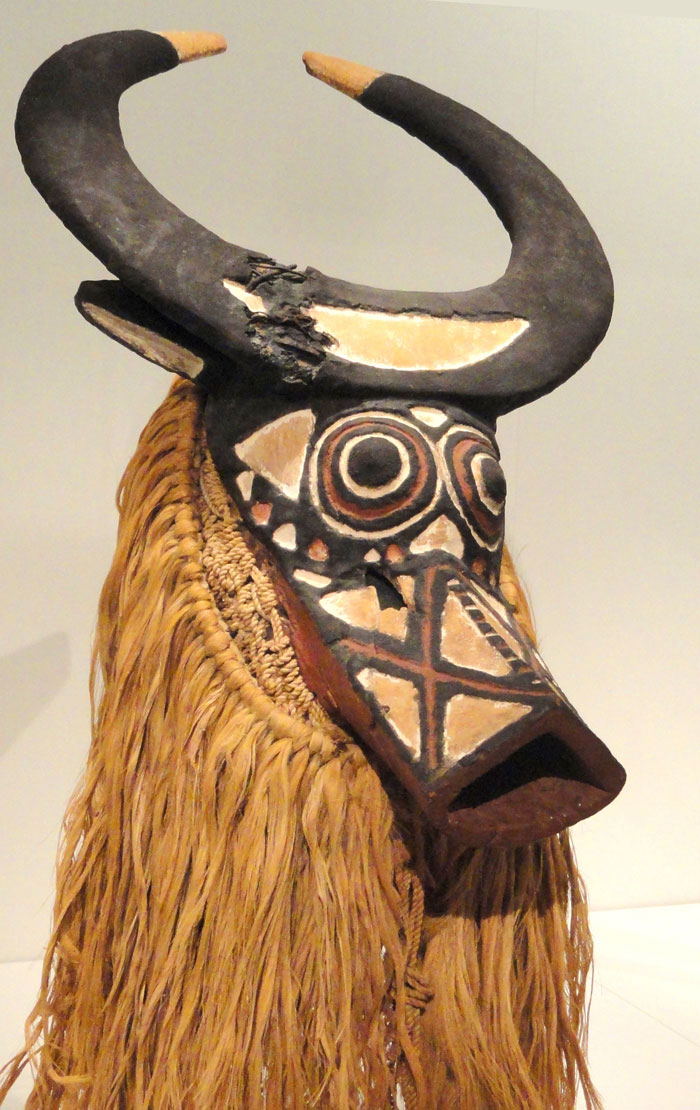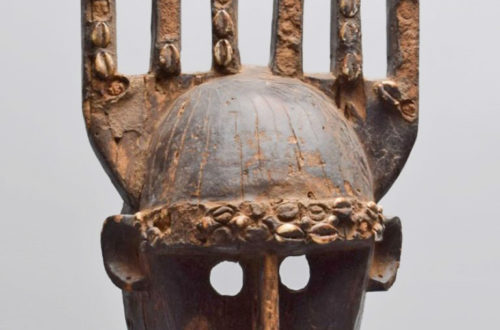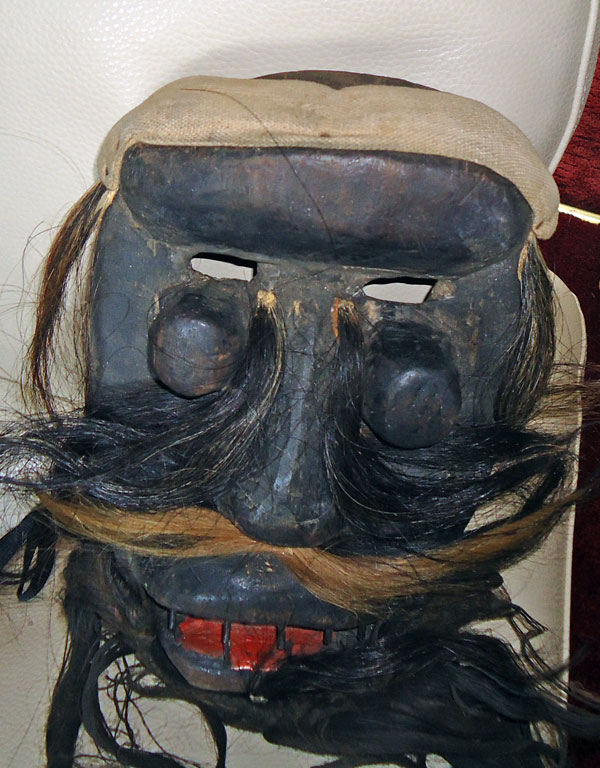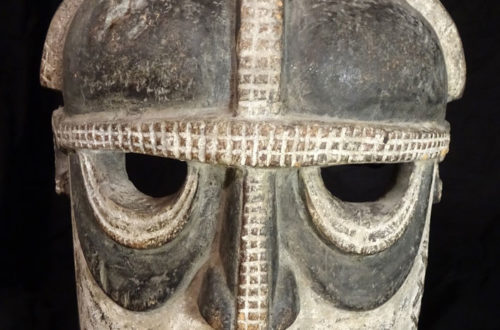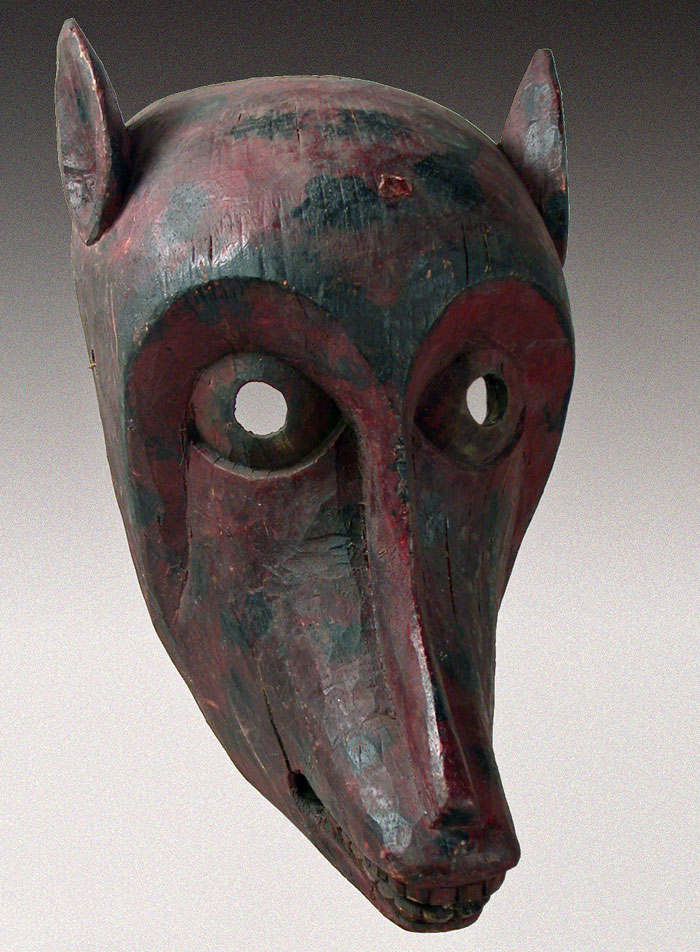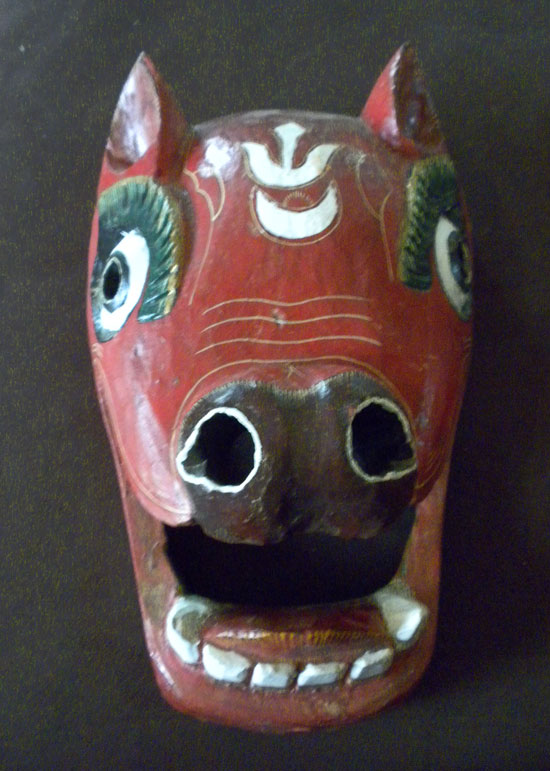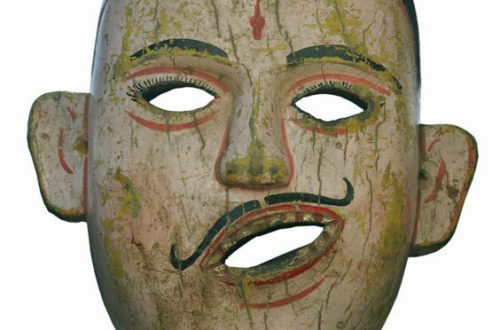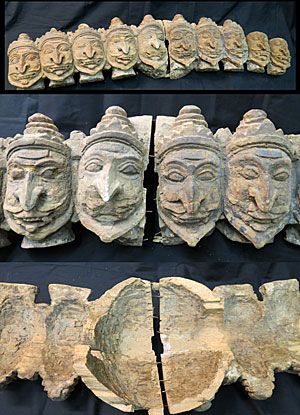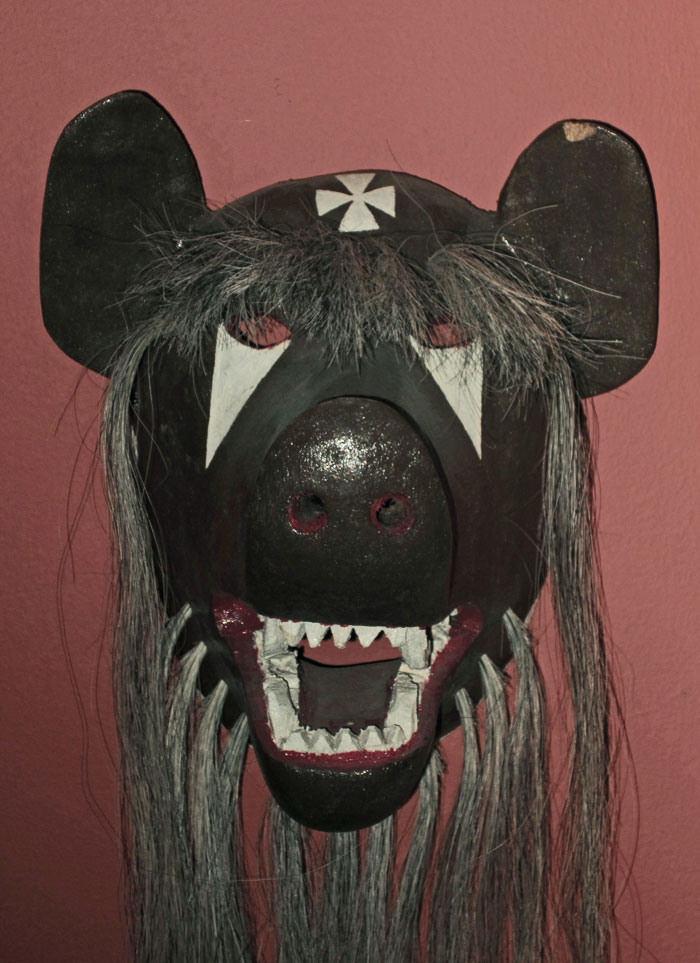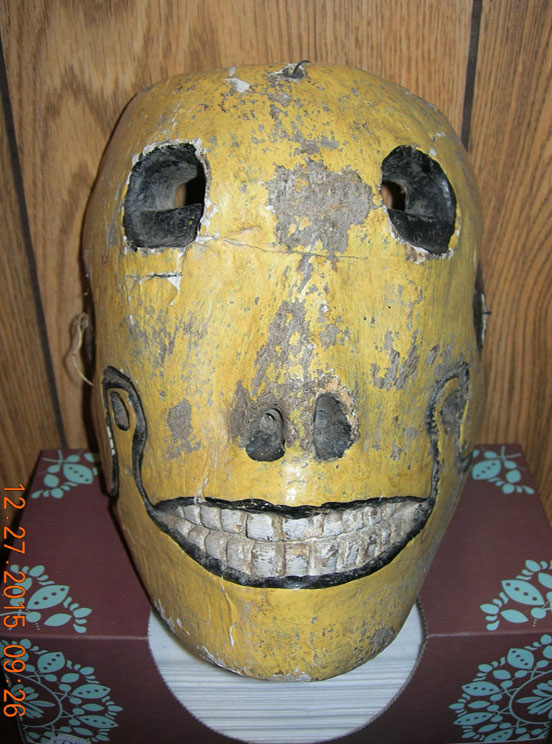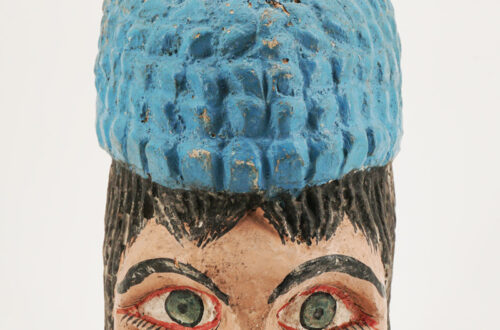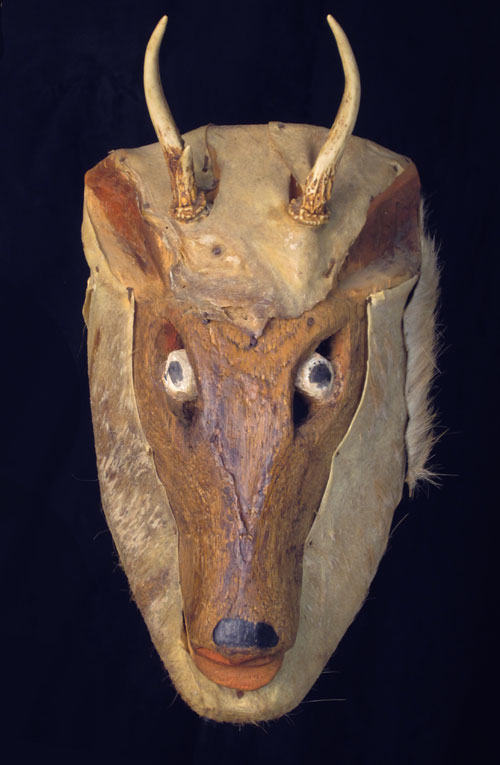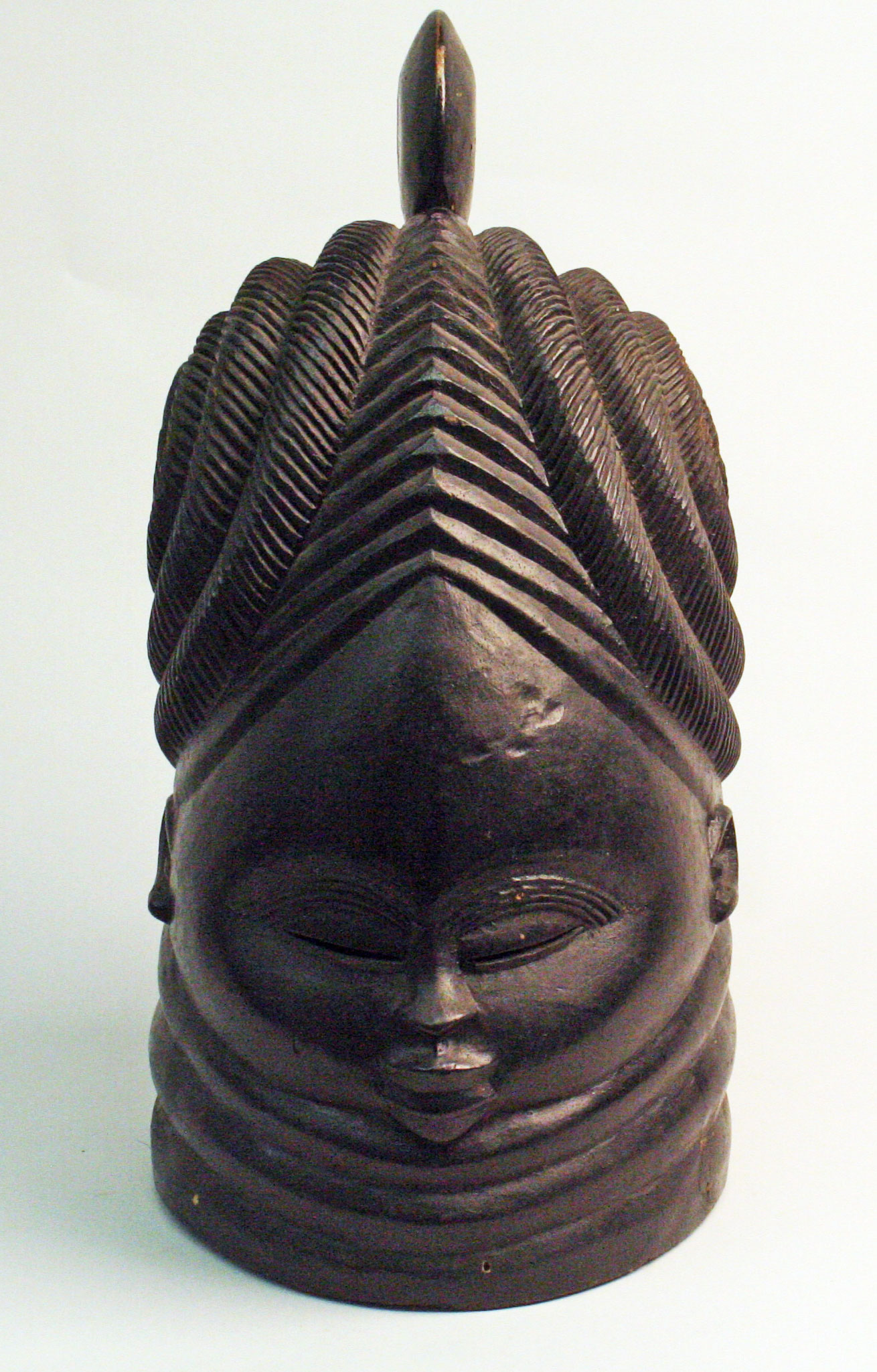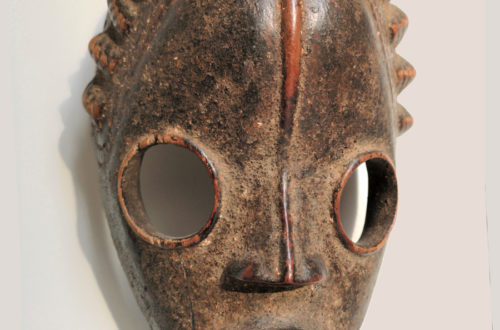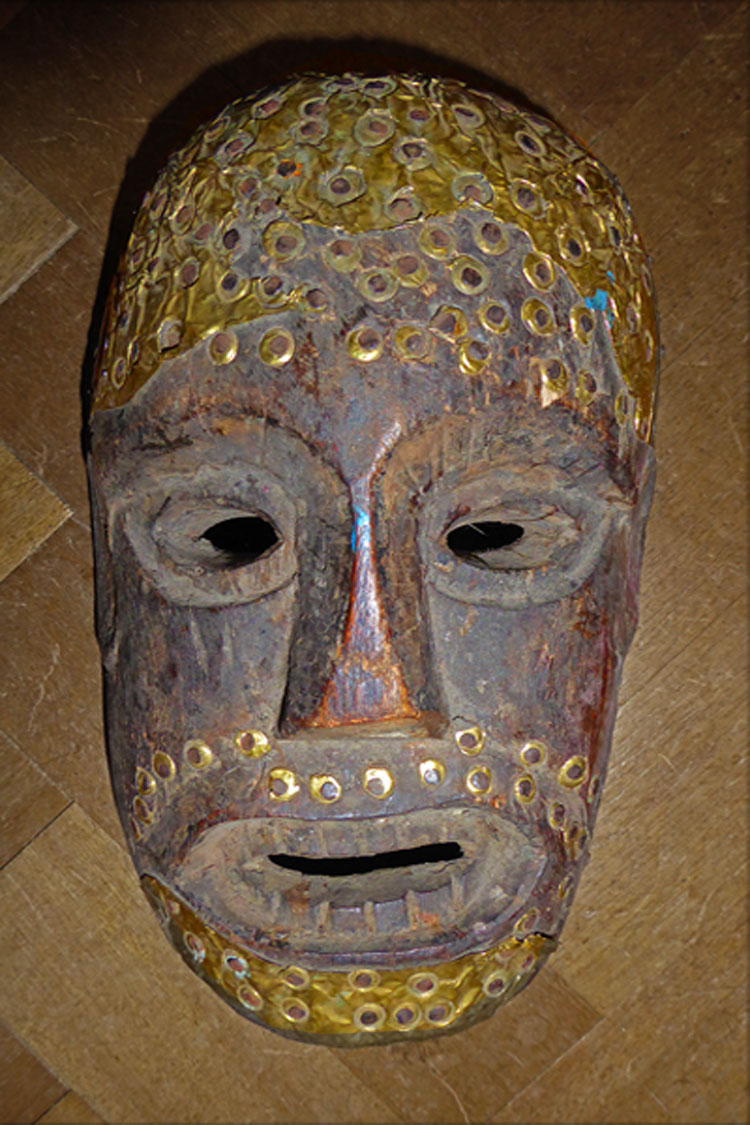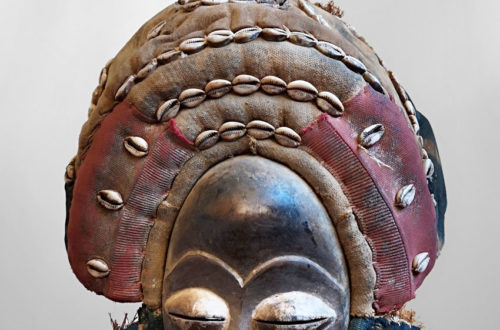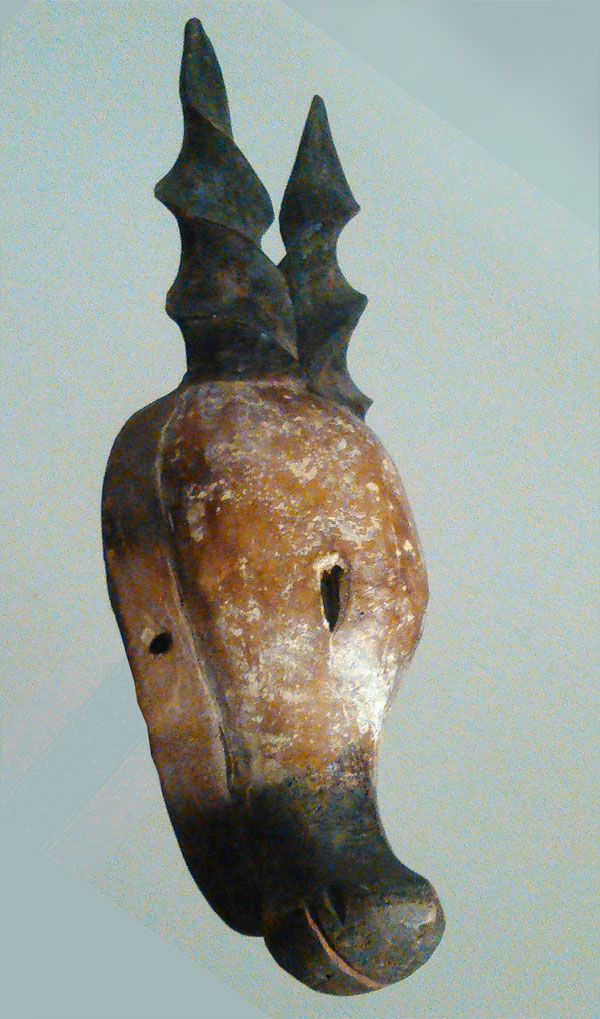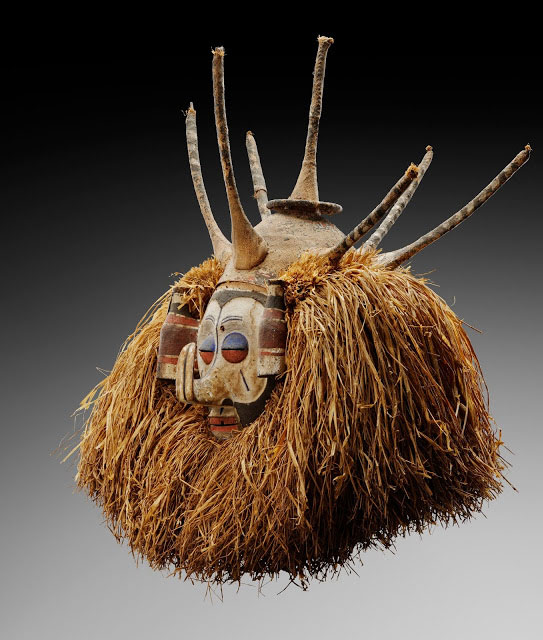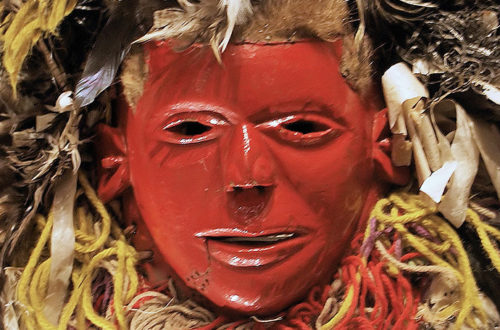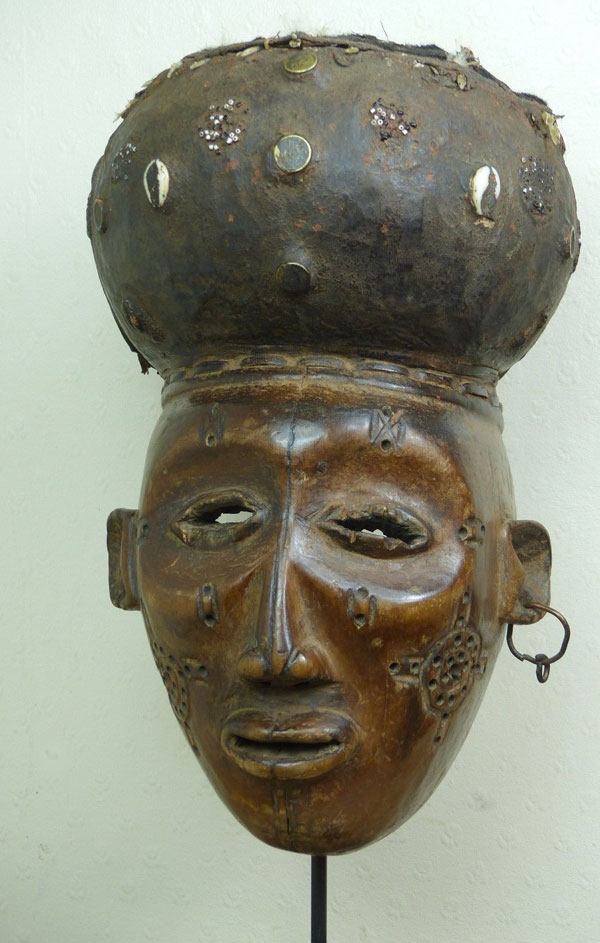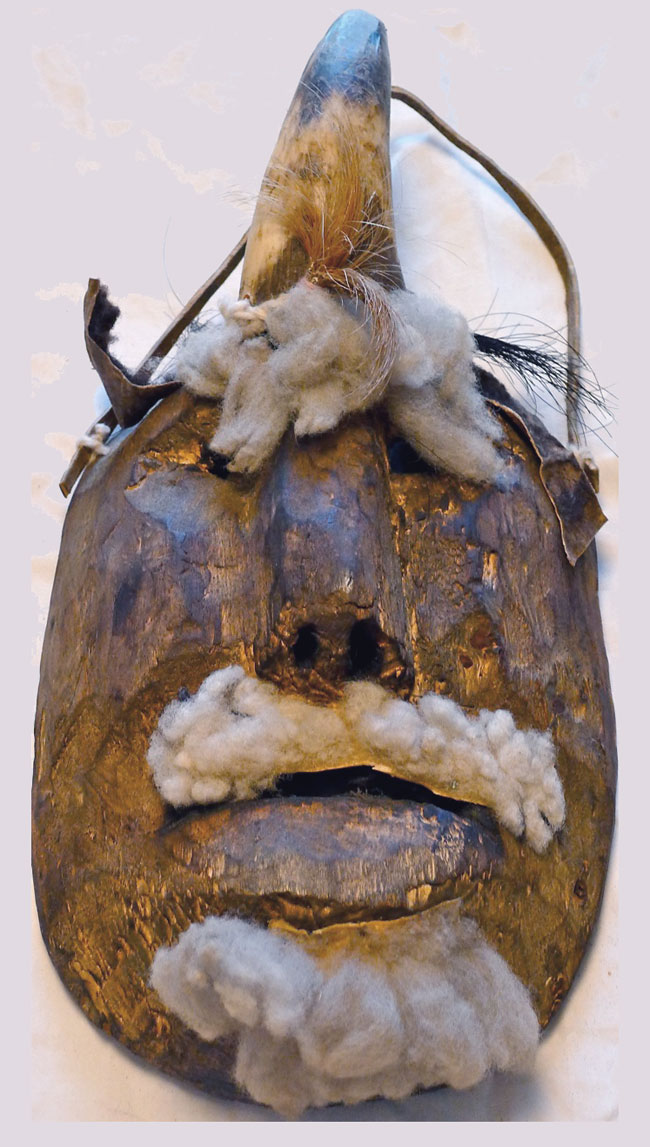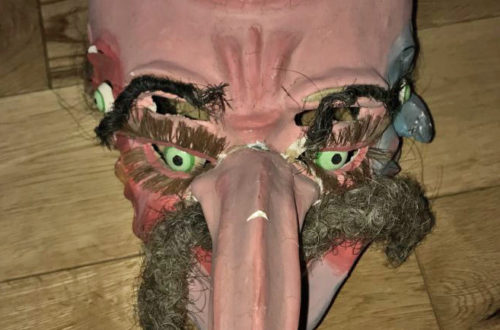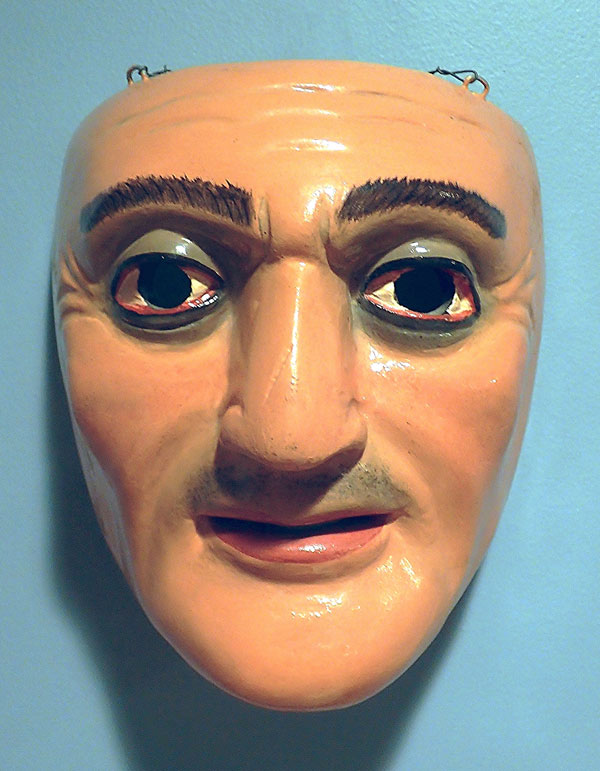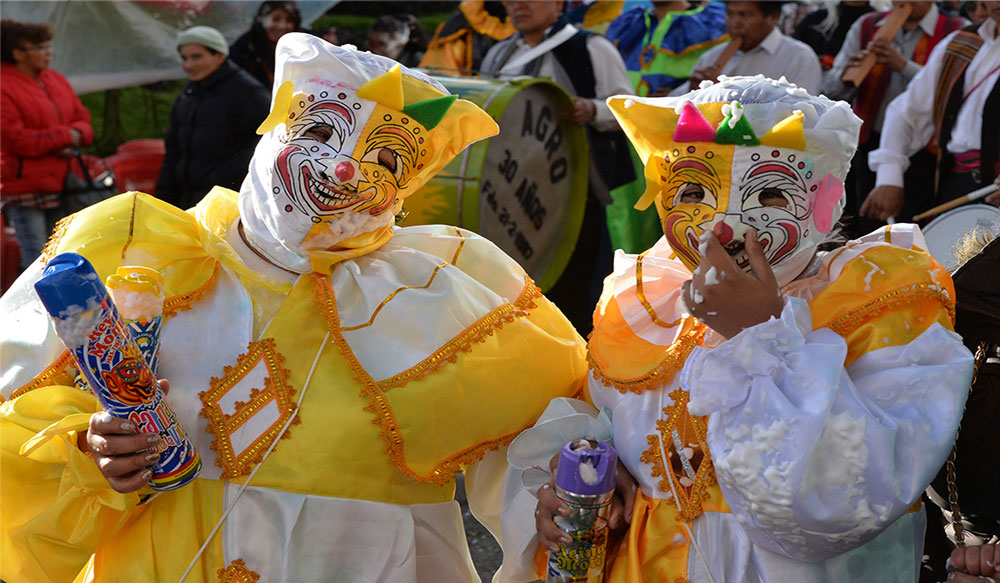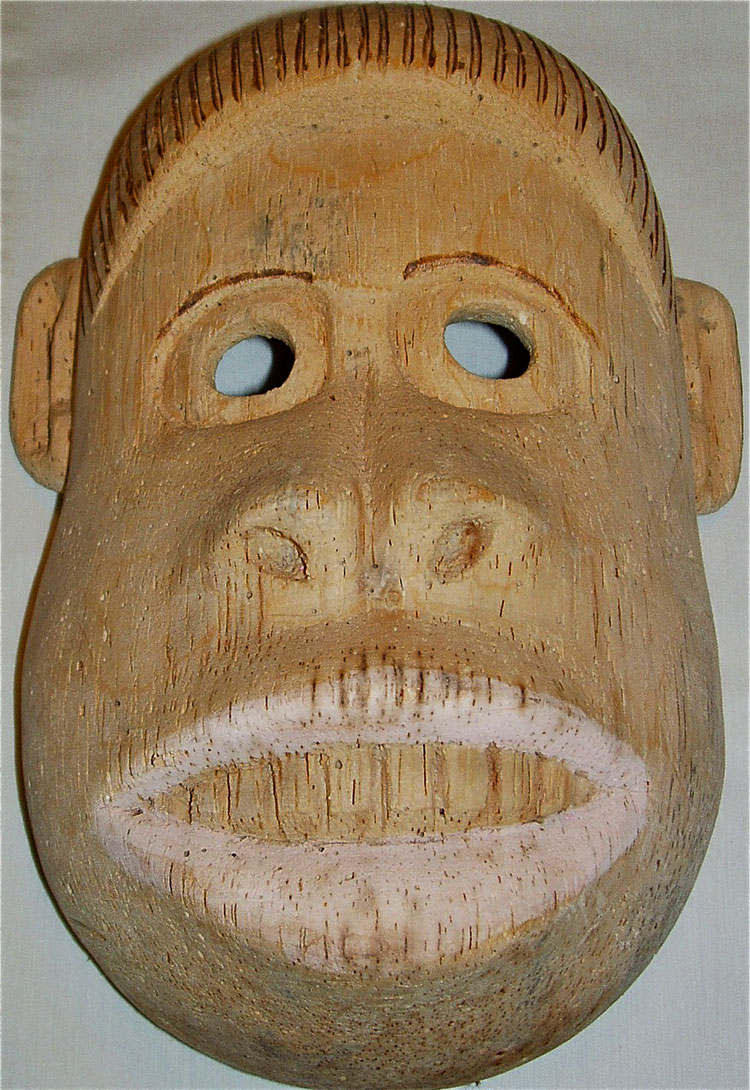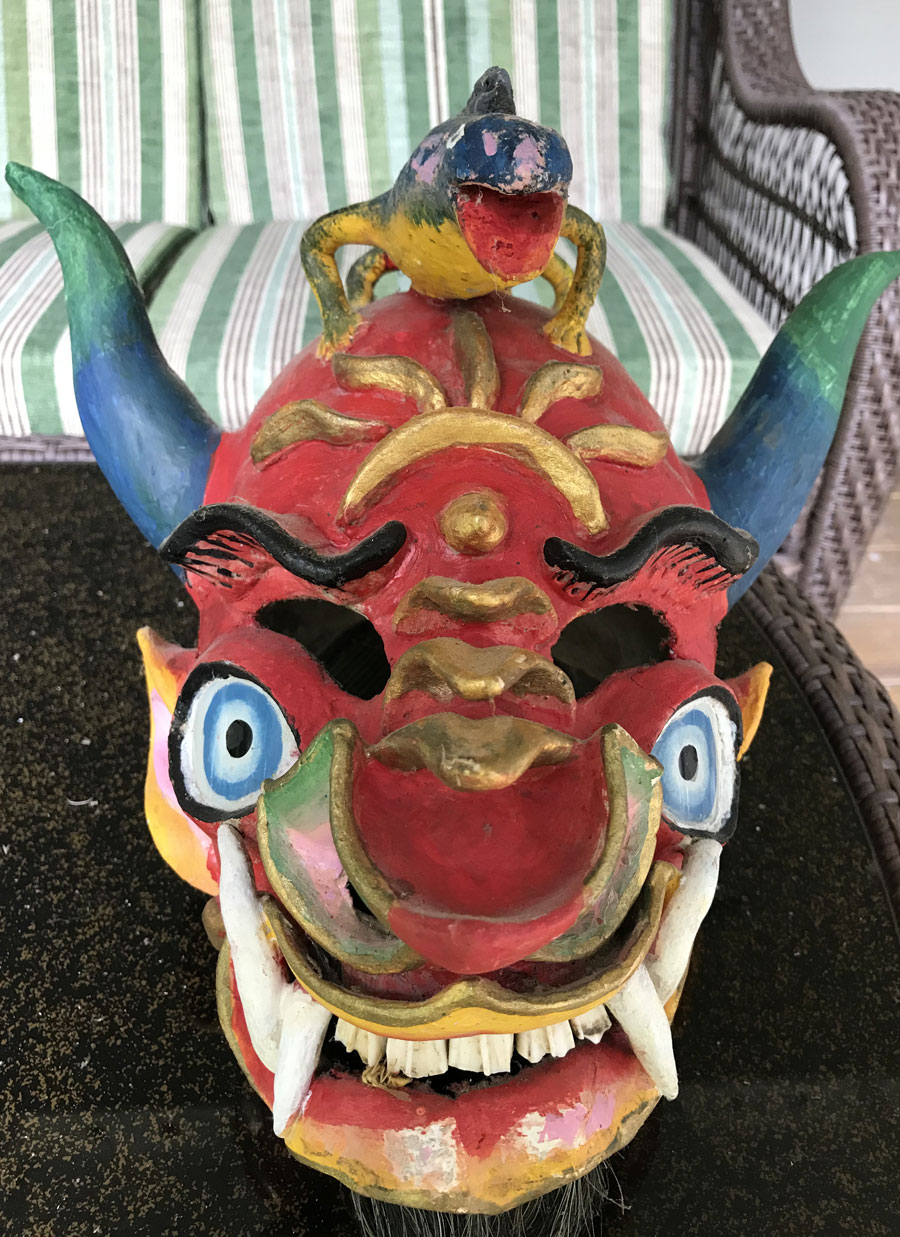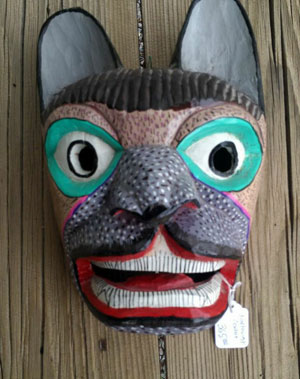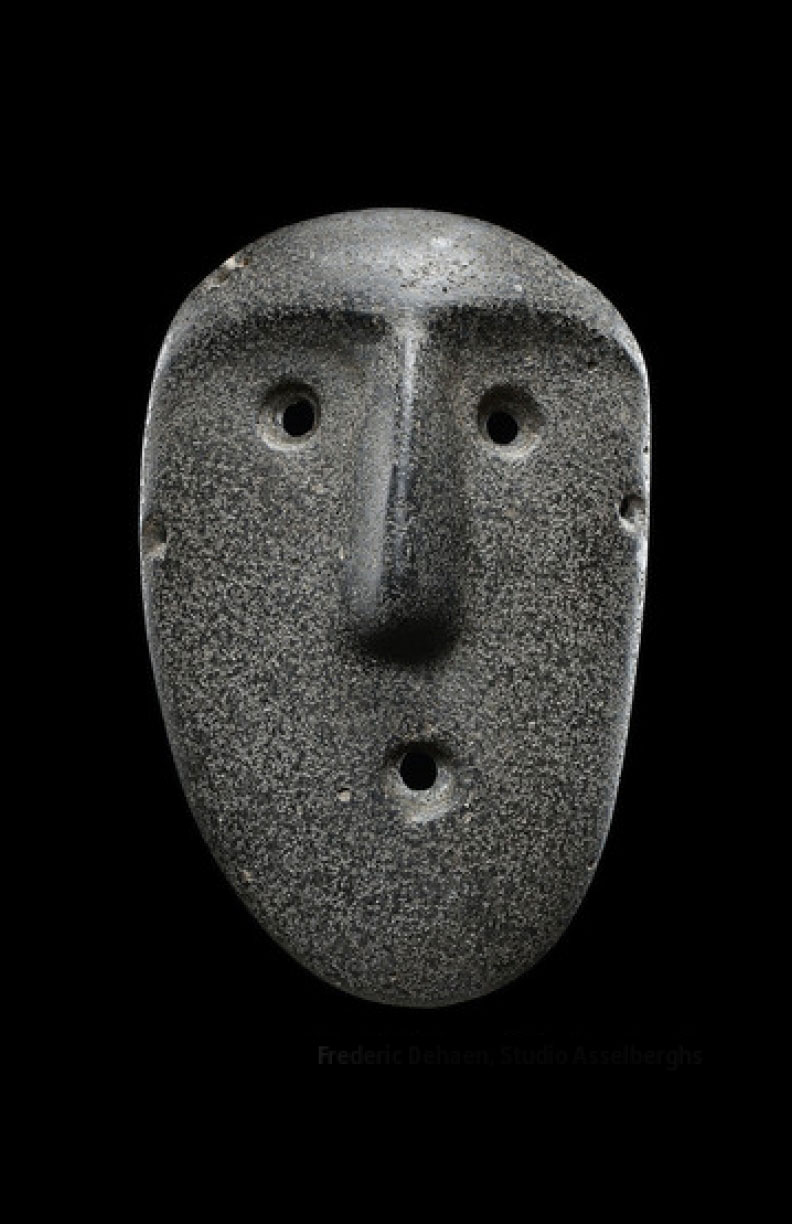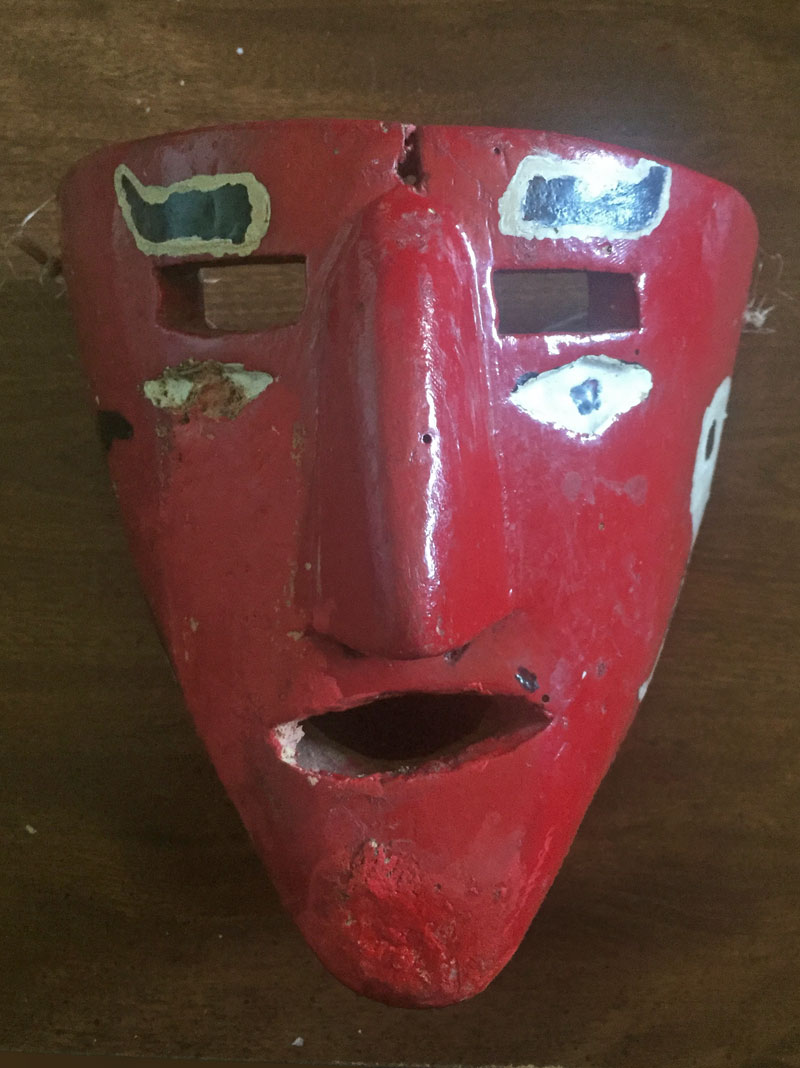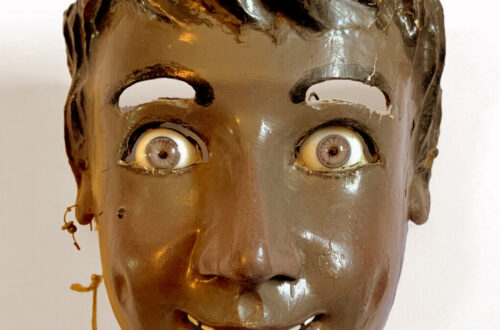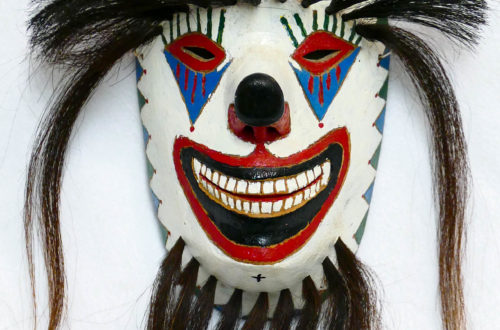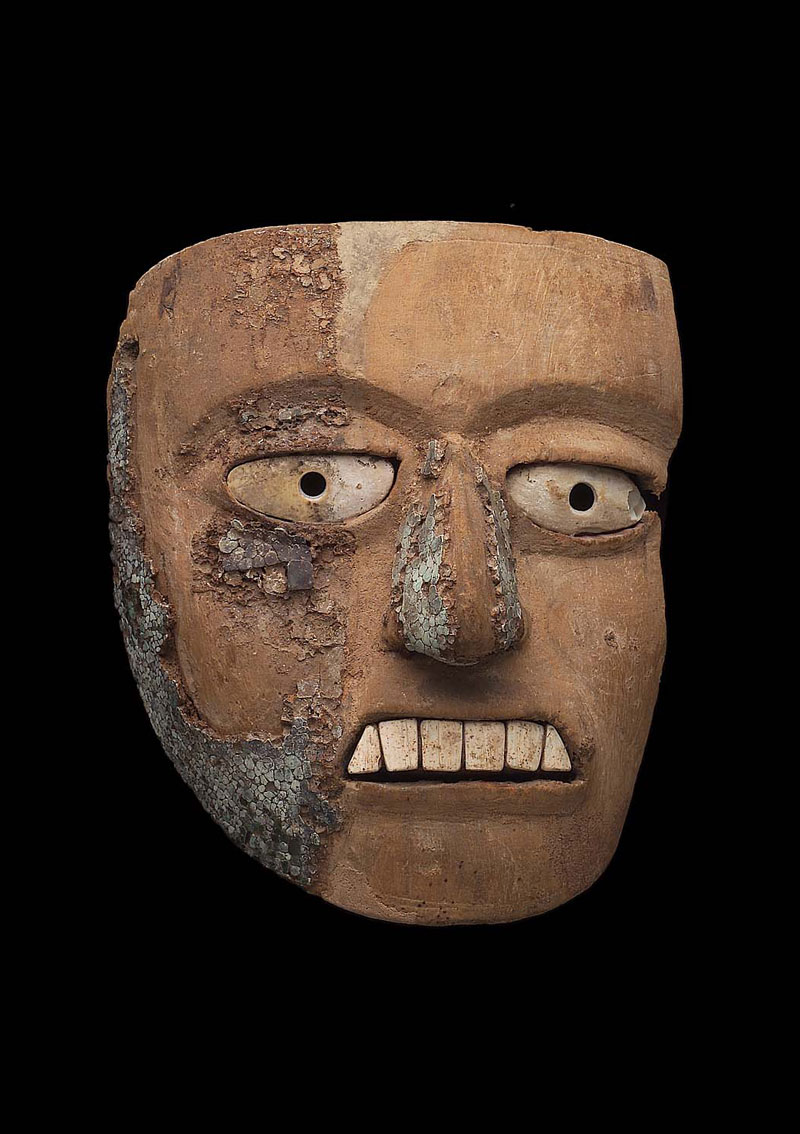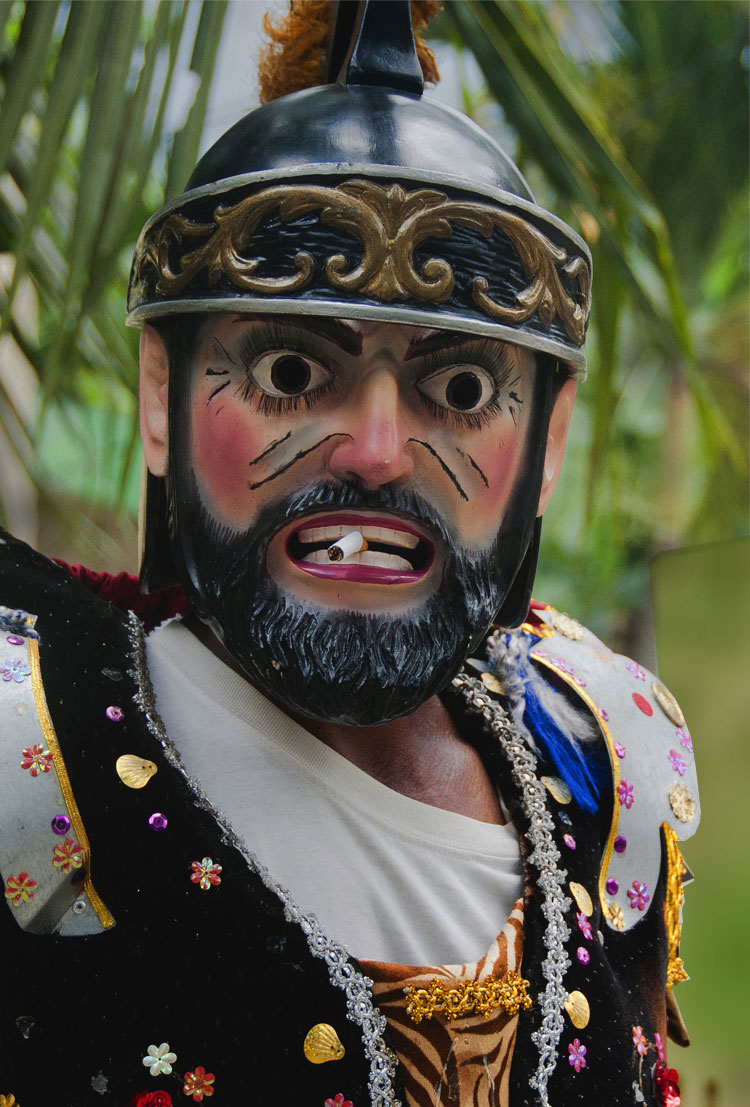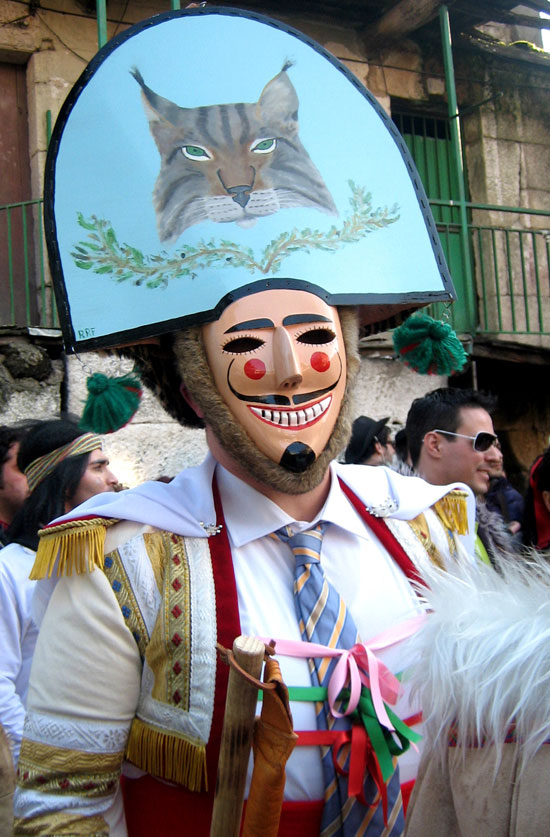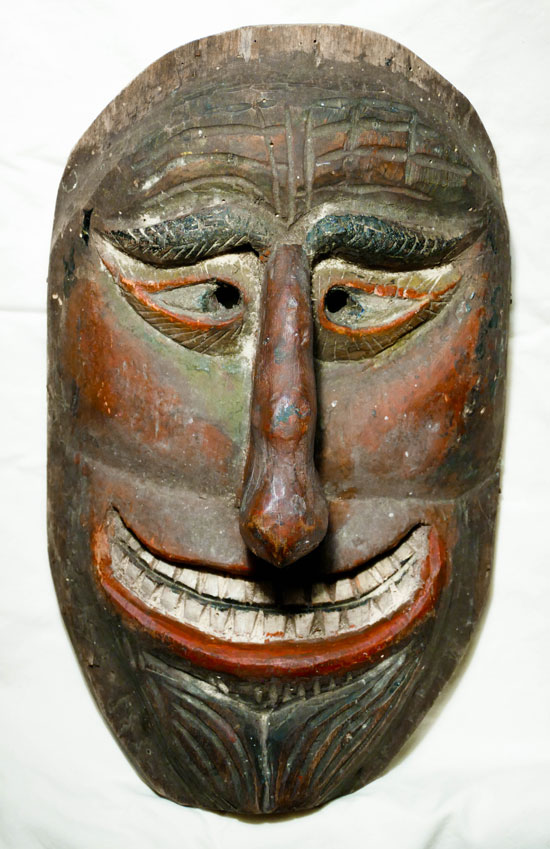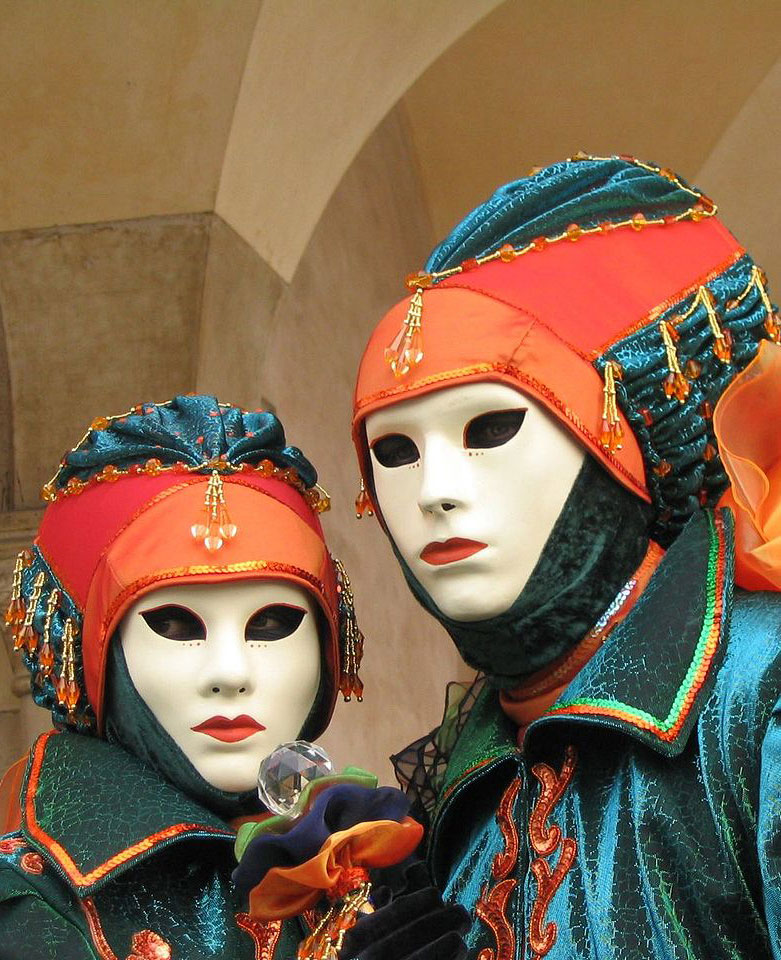Q: I hope that you find interest in this discovery of mine from eBay. It measures 14″ high x 7″ wide. I think I paid about $30 for it. I haven’t seen a hand held African owl mask before. This one is rather beat up, and as usual there is no history for it. Fred, 1145 A: I’ve seen owl masks from a lot of places in West and Central (DRC) Africa. I’ve also seen a few masks with handles, but not the two in combination like this one. I hope a reader will help with a comment. I’ll make a wild guess and say it’s from the Bobo…
-
-
Real masks vs. tourist souvenirs
Here is a traditional African animal mask made by the Bobo people of Burkina Faso. Though it has sustained some damage, I would still be proud to own it. It is quite beautiful and with a little research you could learn about the animal portrayed, the purpose of the ceremony, its anthropology, art history… and more. The three other carvings cannot be identified. They were made to be sold as a souvenirs or as wall art. Tourist masks like this can be fine for decoration. But real masks– the ones that are actually worn in native cultures– are often better looking and always more interesting. Note that two of these…
-
Old Himalayan mask
A large photo of this mask is shown on page 36 of Masks of the World by Ibold and Yohn. The caption reads: Nepal monkey mask – Terai region, Nepal and South Himalayas, 14 inches, painted wood. Represents a monkey or possibly another animal. It is an excellent carving with great aesthetic appeal and rather thin walls. Folk art carvings from the Terai are seldom sculpted this gracefully. I believe there is a treacherous monkey character somewhere in the Ramayama, that very long, ancient epic poem written in the 11th century. The old, used masks of the Himalayas are always interesting. Unfortunately, we still see a great deal of tourist…
-
Yaqui and Mayo Pascola masks
In the states of Sonora and Sinaloa in northwestern Mexico there are two Indian tribes who are well know for their masked performances. I wanted to show you this Yaqui Pascola mask with its short eyebrows, plus a group of 13 similar masks that portray different characters and animals. The ones with long, flowing eyebrows are used by the Mayo who are further south in Sinaloa. I wanted to show you these masks because Pascolas get used a lot on Good Friday (which is today). And because I mentioned in the previous blog that I admire mask collections that focus on one type of mask, a single culture or a…
-
A woman’s mask from West Africa
The Sande Society prepares young women for adulthood in the Mende and Temne cultures of Sierra Leone. These black helmet masks that fit over the head and down to the shoulders are the only masks in Africa worn by women. These unique ceremonial masks are called Sowos and have voluminous neck-rings, very small faces, large heads, and all kinds of coiffures. But they can also have other things that are different, such as horns, abstract sculpture, different animals, and much more. There are plenty of female characters in African masquerade, but they are always portrayed by male dancers. I have seen collections of Sande Society masks that show an amazing…
-
Another Kwele mask from Gabon
Thank you very much Bob, you confirmed my suspicions about it. Also appreciate the addition of it to your website along with the mention of Kwele masks. I attached a picture of a mask I have. I do wish to get a more traditional looking one. There are ones covered in kaolin clay and flatter in shape, like the one you posted. Forest, 1140 A: Forest is referring to a recent post on March 24th which showed a much different Kwele antelope mask. This tribe makes quite a few versions of the Kwele. You can see more different ones on page 28 of Masks of the World by Ibold &…
-
Another mask from the Deep South
I normally post only one mask per person, however the previous South American mask from Paraguay is interesting in comparison to this one. Here we have one from the Mapuche people of south-central Chile. Both indigenous groups survived colonization of lower South America, but they are small populations in comparison to the Indian populations further north, so we don’t get to see their masks very often. 1139 Here is what Dean has to say about this Mapuche mask… Carved, plain, human/spirit; leather hanging thong & for the lips; has a horn tacked onto the forehead, along with 3 strips & brown horsehair; wool for the hair, mustache & goatee. 15…
-
Indian mask from South America
Q: In June I will be donating my Mataco & other art from Argentina, which includes the two fine masks from that region that I got from you. It might be best for folks if you posted the photo of this mask because it seems that these plain wood masks are what they are making these days in Paraguay. As I mentioned in my e-mail of today, the Chaco area is the region from which I’ll next be donating my art, which is currently on display in our dining room. I picked for you this mask because it’s pretty rare and interesting. Dean, 1138 A: When the Europeans settled in…
-
Old, used Mexican mask
Q: I picked this mask up in a little shop in Juarez Mexico City. The seller said that it was authentic. On each cheek there is half of a yin yang. Not what I typically think of for Central America. The eye hole placements look right for a Mexican mask though, there seems to be signs of wear, there’s a nose hole, and it’s been visibly repaired. To me, all signs of authenticity. I asked the seller to write down anything she knew. She wrote “Mascava del año 1940” and “Estado de Veracruz”. The mystery gets better due to the fact that the original owners name was written on the…
-
There’s an Easter surprise in the Philippines.
Just south of Luzon on the island of Maranduque there are Roman Catholics who celebrate the death and resurrection with realistic masks and costumes. Called the Morones Festival, it’s quite a pageant and not something you would expect to see in the South Pacific or anywhere else in Asia. It celebrates the Holy Week Festivities to the fullest with parades, processions and other activities. As in the Spanish Colonial traditions, many of the participants are costumed as Jewish followers of Jesus and the ruling Romans. Morones means army helmet in Spanish. The Morones Festival was started in 1807 by a Jesuit priest from Mexico. This Mexican folk play re-enacts the…
